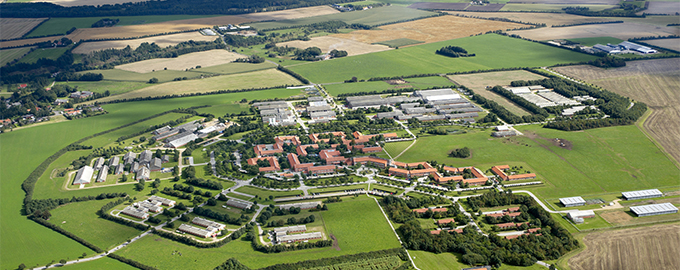
AU Foulum is part of Aarhus University and is home to most of the university’s research in food and agriculture. Research areas include plants, animals, food, organic farming, bioenergy, environment, climate, soil, genetics and technology.
Within the centre you will find the Department of Animal Science, Department of Agroecology and research groups from the Department of Food Science, Department of Molecular Biology and Genetics, and Department of Engineering.
Biogas plant
The world's largest biogas plant for research purposes can be found at AU Foulum. It is used by researchers and companies for the study of technologies for all aspects of biomass treatment and control of the biogas process.
HTL Pilot Plant
Aarhus University has designed and built a pilot plant for the hydrothermal conversion of biomass into chemicals or fuels that can be mixed with or replace motor fuels.
The process is popularly known as HTL (hydrothermal liquefaction). Basically, organic materials are mixed with water and subjected to high pressures of 150-350 bar and temperatures of 300-450 degrees. The result after a short process is a viscous oil that can be refined to both a diesel fuel and numerous other products.
Biofuel Laboratory
Straw, energy crops and other biomass are increasingly used for the production of heat. To be able to test and develop boilers for biofuels, AU Foulum started using a new lab in September 2011.
The primary object of the lab is to improve the efficiency of smaller biofuel plants, reduce emission of environmentally damaging substances including carrying out incineration experiments with new types and different combinations of biomass.
Research platform for the extraction of protein from green biomasses
With a view to examining the possibilities of utilizing this potential, Aarhus University has established a research platform focusing on the extraction of protein from clover, lucerne/alfalfa and grasses. The platform includes laboratory facilities for the extraction and analyses of fractionations of protein and other high-value components. In addition, a pilot plant for large scale extraction has been built. This plant includes equipment for all processes ranging from pressing fresh biomass, e.g. grass, to the final products such as pulp and juice.